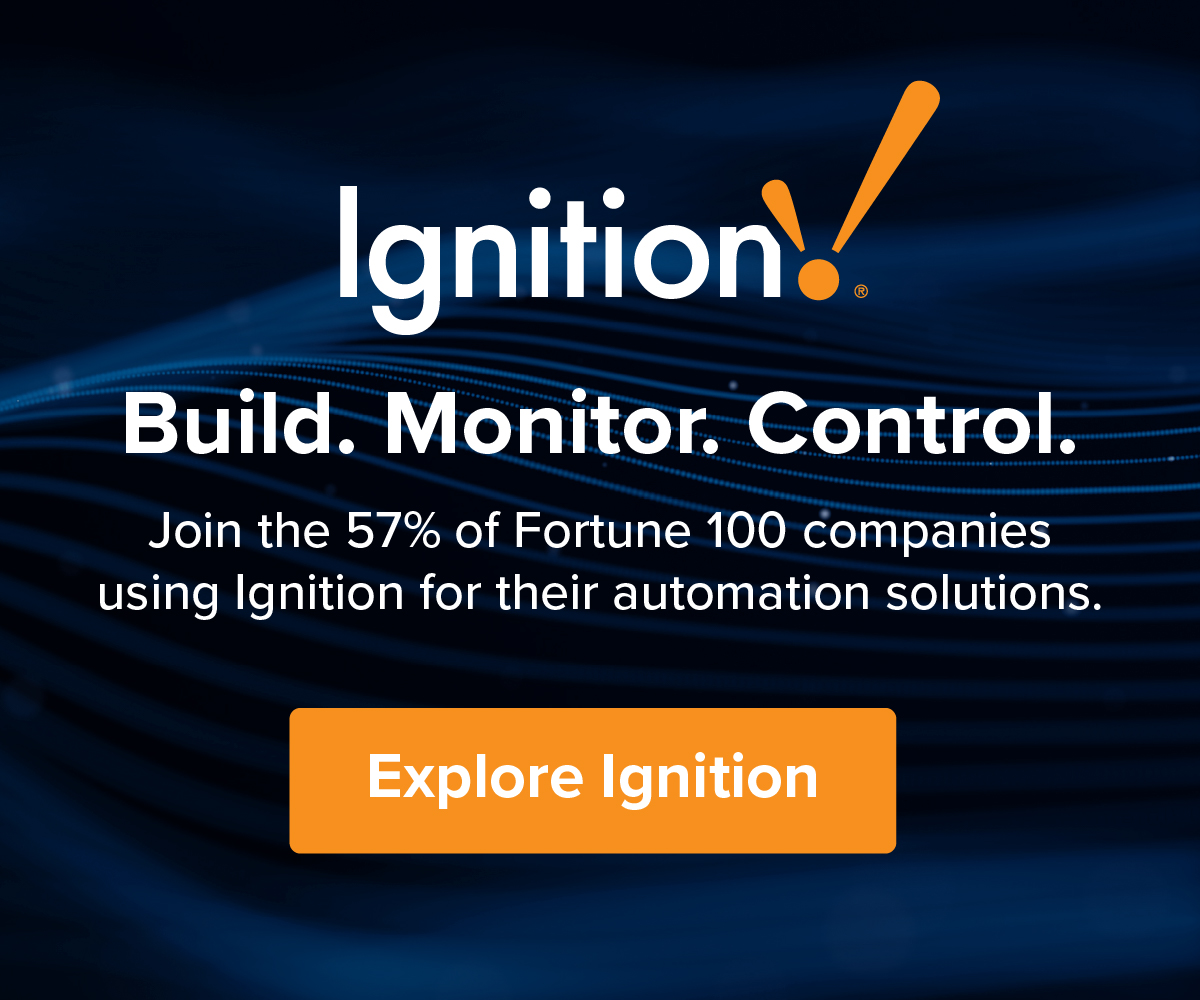by Gary Mintchell | Mar 13, 2024 | Automation, Embedded Control, Process Control, Standards, Technology
- Targeted at Open, Modular Process Control Systems
- Modular compute, switch, and I/O architecture enables interoperable standard for industrial PCs, PLCs, and distributed control systems.
- Supports IEC 61499 and IEC 61131 for compatibility with a wide range of automation systems.
- Hot-swappable modules can be replaced or upgraded while the system is running, minimizing downtime and maintenance costs.
I am trying to understand this one. Reading it for the third time, I guess the Open Process Automation Forum decided that one of its defined components among its “standard of standards” needed to be a standard. Although this “open, modular process control system” sounds eerily familiar. I hope it does help move the industry forward.
PICMG, the consortium for open hardware specifications, announced the release of InterEdge, a modular architecture for process control systems (PCS). The IEC 61499 and IEC 61131-compatible InterEdge specification promises to revolutionize the industry with an interoperable, multi-vendor alternative to proprietary Industrial PCs (IPCs), Programmable Logic Controllers (PLCs), and Distributed Control Systems (DCSs).
Given that the OPAF initiative was begun by ExxonMobil engineering leaders, this quote is informative:
“Business needs evolve at an ever-increasing rate,” said Francisco Garcia, Americas Regional Instrument Lead at ExxonMobil Technology & Engineering Company and member of the InterEdge technical working group. “InterEdge delivers an interchangeable base hardware standard for industrial manufacturers looking to adapt to changing business needs. As a result, providers can deploy and scale dedicated physical assets and focus on value-added software and services.”
And from the press release:
InterEdge defines a vendor-neutral, open standard for edge computing and I/O module hardware. It segments hardware into Compute Modules, Switch Modules, and I/O Modules. All of these modules are connected via a common backplane, enabling easy customization and expansion of industrial automation functions.
An overview of the specification and an architecture diagram are available here. The full specification is available to purchase.
And the reason for the standard:
By replacing proprietary edge devices, InterEdge eliminates vendor lock-in, simplifies integration and maintenance, and enables online upgrades, all of which contribute to significant cost savings.
by Gary Mintchell | Nov 28, 2023 | Automation, Cloud, Edge, Embedded Control
Edge compute continues to be the most talked about part of the network these days. This news concerns an application development platform for Edge and Cloud. I wish I could try out all this software like I used to many years ago. It’s all too complex and expensive today. Like everything, I don’t know if it works, but it sounds good.
Lightbend Inc., the company providing cloud native microservices frameworks for some of the world’s largest brands, has announced the release of its latest version of Akka, one of the industry’s most powerful platforms for distributed computing, which incorporates a new and unique programming model that enables developers to build an application once and have it work across both Cloud and Edge environments.
“Today, applications developed for cloud native environments are generally not well-suited to the Edge and vice versa,” said Jonas Bonér, Lightbend’s founder and CEO. “This has always struck me as counter-productive, as both architectures lean heavily on one another to be successful. As the line between Cloud and Edge environments continues to blur, Akka Edge brings industry-first capabilities to enable developers to build once for the Cloud and, when ready, deploy seamlessly to the Edge.”
“Akka has been a powerful enabling technology for us to build high-performance Cloud systems for our clients,” said Jean-Philippe Le Roux, CEO of Reflek.io, an innovative company delivering Digital Twin technologies to geo-distributed companies. “We have been able to dramatically speed our time-to-production by building a single solution for both Cloud and Edge with Akka.”
Akka provides a singular programming model that eliminates the high latency, large footprint, and complexity barriers the Edge has posed for development teams wanting to bridge the Edge and Cloud. Developers focus on business logic, not complicated, time-consuming tool integrations. As a result, businesses can harness, distribute, and fully utilize the vast amount of intelligent data to improve their operations, regardless of where that data is generated. Some specific capabilities of the latest version of Akka include:
- Adaptive Data Availability
- Projections over gRPC for the Edge – asynchronous, brokerless service-to-service communication
- Scalability and efficiency improvements to handle the large scale of many Edge services
- Programmatically defined low-footprint active entity migration
- Temporal, geographic, and use-based migration
- Run Efficiently In Resource Constrained Environments
- Support for more constrained environments such as running with GraalVM native image and lightweight Kubernetes distributions
- Support for multidimensional autoscaling and scale to near zero
- Lightweight storage, for running durable actors at the far edge
- A Single Programming Model for the Cloud-to-Edge Continuum
- Akka single programming model keeps the code, the tools, the patterns, and the communication the same, regardless if it is Cloud, Edge, or in between
- Seamless Integration – works at the Edge or in the Cluster automatically
- Empowering New Innovation
- Active/Active digital twins, and many other new use cases
- No dealing with complicated logic to handle network segregation
- Focus on business logic and flow (not on tool integrations)
by Gary Mintchell | Nov 21, 2023 | Automation, Embedded Control, News
I’ve written a few times about Bosch Rexroth’s new OS and platform ctrlX. Most recently here. Just realizing that I have another post in queue to expand on the potentials of the OS. The company and its technology are attracting a number of partners. This is interesting. Will the market follow?
The vision of an automation world in which competitors become partners and users help to shape the solutions is becoming reality. The operating system ctrlX OS with its ecosystem has won over even more collaborators: In addition to WAGO, the first company to join the group, Dell Technologies, Nokia and others have joined too. As a result, the solution is now established on all levels of the automation pyramid. The partner network ctrlX World is growing too and now offers even more variety. At the moment, partner companies cover more than 150 use cases. KUKA, another leading robot brand, recently joined the group.
“Automation needs to move away from proprietary systems towards open, modular and scalable microservices architectures that will enable a profound transformation of industry in terms of digitalization, connectivity and sustainability. ctrlX OS is the enabler for this,” said Steffen Winkler, Vice President Sales Business Unit Automation & Electrification Solutions at Bosch Rexroth.
With ctrlX OS, Bosch Rexroth has developed an operating system with digital services. It is a core part of the ecosystem initiated by ctrlX AUTOMATION. The entire sector has access to it, even competitors. The aim of Bosch Rexroth and the partner companies is to create an open industry standard for the market.
Bosch Rexroth has opened up the operating system ctrlX OS for the entire market. It entered into its first system and technology partnership with WAGO. “We offer ctrlX OS on our own devices and develop specific applications on the basis of the operating system. WAGO is about to launch the Edge Controller 400 and the Edge Computer with ctrlX OS to coincide with the SPS trade fair. Together, we’d like to strengthen ctrlX OS and develop it further,” said Johannes Pfeffer, Vice President Business Unit Automation at WAGO.
Because it can be used flexibly on various levels, ctrlX OS is of interest not only for industrial control systems and edge industry PCs. As a virtualized solution, the operating system also runs on edge servers in close proximity to machines and production lines, in data centers and in the cloud.
Dell Technologies and Bosch Rexroth are working together to integrate ctrlX OS as an out-of-the-box software module for Dell NativeEdge, an edge operations software platform that simplifies edge operations and provides zero-touch implementation and zero-trust functions.
The solution offers companies support for applications and services needed to ensure smooth system operation – across sectors, in cloud environments and at sites spread across the world. To reduce time to production, Bosch Rexroth and Dell are helping customers to quickly configure, deploy and scale ctrlX OS in their environments with Dell Validated Designs for Edge.
Nokia is integrating the virtualized operating system ctrlX OS into its Nokia MX Industrial Edge (MXIE) on-premises operational technology (OT) edge solution. Various applications run on this and it has private wireless 5G campus network technology. Through this integration, Nokia MXIE customers can install ctrlX OS as an application at the click of a mouse and thus operate their business-critical use cases with reduced latency.
KUKA, a leading robot brand, has now joined the group. As a result, there is now a KUKA connection and integration based on the KUKA.PLC mxAutomation interface. This is used by the company Mairotec in its “MAIRobot” app and in an exhibit which will be shown at the Rexroth stand (booth 450 in hall 7) at SPS 2023.
by Gary Mintchell | Nov 6, 2023 | Automation, Embedded Control, Open Source
This news contains information about another open-source industrial computer based on an inexpensive module—in this case Raspberry Pi. Again I ask (not predicting, but wondering) whether the new wave of engineers inevitably coming into this market will prefer something, small, inexpensive, programmable in familiar languages, and flexible due to advances in networking?
Phytools, a leading IIoT value-added reseller, announced Oct. 11 the publication of its first Revolution Pi White Paper, presenting the seven-year history and technical details of this revolutionary open-source industrial PC (IPC) in an easily-digestible medium. Built on the open, customizable, and commercial-off-the-shelf premise of Raspberry Pi, RevPi ruggedizes the versatile microcomputer for use in industrial applications.
IIoT-enabled IPCs like RevPi are ideal for automation, data connectivity, motion control, robotics support, machine visualization, and many more applications. From 2016 to the present, RevPi has cemented its place in the market by incorporating features such as:
- Modular form factors
- Operating system (OS) determinism
- A wide variety of input/output (I/O) modules
- Communications gateway functionality
- DIN-rail mounting capability
- And extensive support for third-party software, such as CODESYS soft PLC
The latest revision—RevPi Connect 4—was released in August 2023, equipped with a Broadcom BCM2711 processor and support for WLAN and Bluetooth communications. This most recent lineup addition also comes with a battery-buffered real-time clock and easier I/O expansion with a plug-and-play GUI.
RevPi base modules come equipped with USB, Ethernet, and HDMI connections. The two USB 2.0 sockets are each capable of supplying 500mA at 5V, alleviating the need for an external USB power supply when connecting parallel devices. The onboard RJ45 Ethernet connection is industrially hardened with suppressor circuits, and a micro-HDMI socket is included for connecting a monitor with sound output.
The RevPi delineates itself from Raspberry Pi with a portion of its operating system dedicated to deterministic control. Most PLCs in industrial settings leverage a real-time OS (RTOS) to ensure deterministic program execution through a dedicated routine, a rigorous treatment which is used to provide the robust and predictable performance necessary to avoid equipment failures and human harm.
A general-purpose PC OS is more versatile than that of a PLC because of its shareable—and usually more powerful—computing resources, which empower multi-tasking, customization, and processor-intensive operations. However, this flexibility presents a greater risk of OS disruption if one or more tasks becomes corrupted or overloads the processor, potentially leading to delays, instability, or a complete crash.
Revolution Pi uses a split OS, providing the determinism of an RTOS, along with the versatility of a standard OS. As a result, RevPi can be developed into an industrially viable small control system, a large scale IIoT platform, or elements of both simultaneously. Its scheduler—which controls the execution of tasks by the operating system—can be configured extensively to avoid networking or software resource delays, ensuring the best performance for real-time control and other critical or time-sensitive tasks.
by Gary Mintchell | Nov 3, 2023 | Automation, Embedded Control, Technology
I don’t do “Top 10 Trends for Next Year” articles. I find them worthless. I do observe and ask questions. Part of these questions were spurred by these two news items about Arduino, that open source inexpensive hardware platform. I also have a news item following about a similar technology—the Raspberry Pi.
Consider these hardware platforms. Consider also that many new engineers will be entering the industry with the wish to use tools such as Python and NodeRED. And no wish for Relay Ladder Logic, or Ladder Diagram as it’s known in IEC 61131. I’d swear that when I was in the machine design and build business every time we lost money on a project it was due to difficulty trouble shooting bugs in Ladder.
I also lived through the transition Rockwell had to make when its cash cows the PLC5 and NEMA motor starters were bypassed by new technology. Developing the Logix engine and moving control development to South Korea and Singapore for the ControlLogix bought the company many years.
Now, I ask, will these new engineers look at the price of a ControlLogix (or similar from Siemens, Beckhoff, ABB, Emerson) and say, “I can do more with less”? I have been asking executives I meet for the past few months. Many see this possibility.
Something to think about as we check out this Arduino news.
In brief:
- Customers report 25-40% accelerated time to market and up to 60% reduction in non-recurring engineering (NRE) services
- Eight companies — including AWS, Software AG, AT Kearney and DMC — joined Arduino Partner Programs in Q3.
- Annual partner conference brought together technology, distributor and integrator partners from around the world
Arduino, an open-source hardware pioneer with 32 million active developers worldwide, today announced its hardware is now integrated into more than 30,000 businesses globally.
The Arduino System Integrators Partnership Program saw tremendous growth in the third quarter, with eight companies signing up as partners, including AWS, Software AG, AT Kearney, DMC, DojoFive, Motion Technology, Riotsecure, and Opreto. These new partners are helping to fuel growth for professional service companies integrating Arduino technology in commercial projects for enterprise clients. Over 20 new system integrators have been accepted into the partnership program over the calendar year.
The program has proven successful for both Arduino and its partners, particularly in industrial automation, condition monitoring, predictive maintenance, IoT and smart agriculture. When leveraging Arduino products with system integrator partners, customers report 25-40% accelerated time to market and up to 60% reduction in non-recurring engineering (NRE) services. Distribution partners remain Arduino’s primary go-to-market source, with 2024 forecasts estimated to be over 200% YoY.
The industrial-grade line of Arduino PRO products lowers the barrier to entry and accelerates time to market for OEMs and industry integrators. Featuring 24 products, including the Portenta X8 Linux SOM and UL-certified Opta PLC. Arduino PRO technology gives more people the power of automation and controls than ever before.
The second news item concerns a new SI parrtnership.
- DMC joins the Arduino System Integrator Partner Program as a Platinum Partner to accelerate time to market for enterprise customers.
- DMC expands Arduino PRO solutions to 13 offices throughout North America, specializing in manufacturing automation & intelligence, test & measurement, embedded development and full-stack software development, including web, cloud, mobile & backend services.
- The combination of DMC’s expert system integration services with Arduino’s world-class hardware advances the democratization of open hardware in the industrial automation sector.
DMC joins Arduino’s ecosystem as a Platinum Partner, part of the Arduino System Integrators Partnership Program. The program is designed to fuel growth for professional service companies integrating Arduino technology in commercial projects for enterprise clients. Under the partnership, DMC and Arduino jointly approach projects to accelerate time-to-market and reduce NRE costs.
The partnership will initially focus on producing commercial solutions for manufacturing, logistic centers, and factories leveraging Arduino’s Opta PLC and Portenta Machine Controller, as well as OEM product development incorporating the Portenta and Nicla line of modules for embedded applications.
by Gary Mintchell | Oct 11, 2023 | Automation, Embedded Control, Technology
Catching up on some older news. Machine vision technology seems to be making a comeback. After considerable consolidation many years ago, the market stabilized. Beckhoff Automation has released a vision system deeply compatible with its automation platform. This should be good for machine builders and their customers.
Beckhoff Vision consists of a line of EtherCAT-enabled industrial cameras, lighting and lensing components are paired with TwinCAT Vision software to round out a complete product portfolio.
Hardware includes area scan cameras, C-mount lenses, multicolor LED illumination and complete vision units.
- Cameras: The IP65/67, EtherCAT-enabled area-scan cameras generate image data via monochrome and color Sony CMOS sensors with up to 24-megapixel resolution and GigE Vision transfer rates of 2.5 Gbit/s.
- Lenses: The robust, industrial C-mount lenses ensure ease of use and high availability, along with robust locking mechanism, VIS to NIR AR coating, up to 2 ìm resolution, and models for camera formats of up to 1.2” (19.3 mm image circle).
- Lighting: The IP65/67, EtherCAT-enabled multicolor LED illumination, in panel, ring, and bar configurations, produces highly controlled illumination for consistently high-quality images. Incorporated current-based controls allow precise operation even in spectrally adjustable pulse mode.
- All-in-one solutions: Complete machine vision units consisting of a camera, illumination and electronically focusable liquid lens are also available.
This fully integrated approach reduces latency, accelerates reaction times and supports a single development environment for the complete machine control solution.





